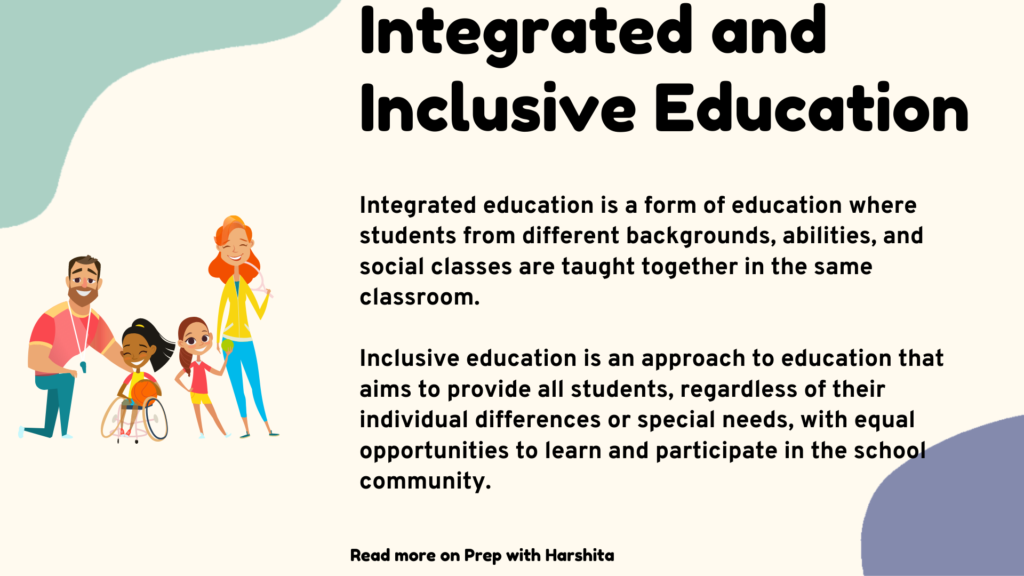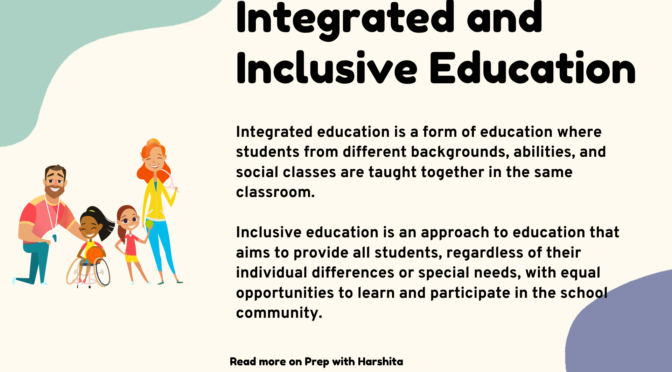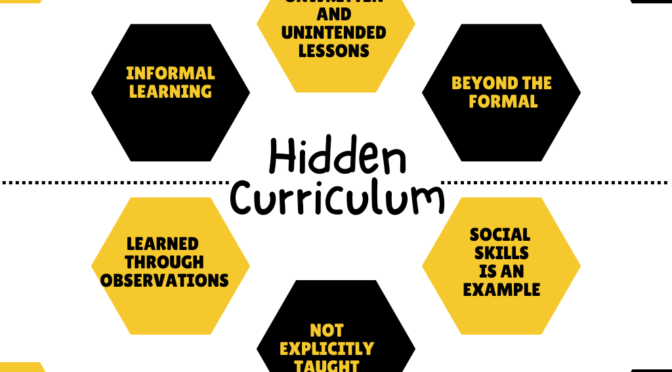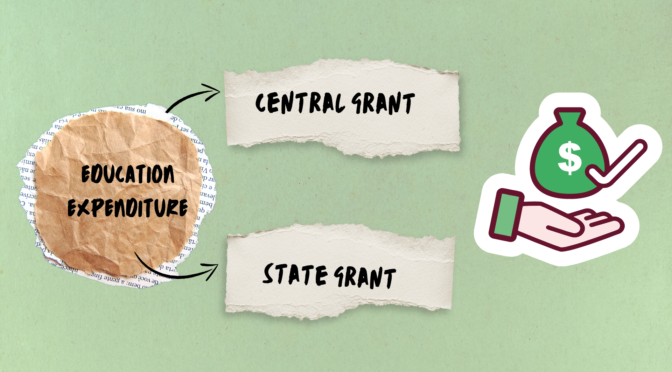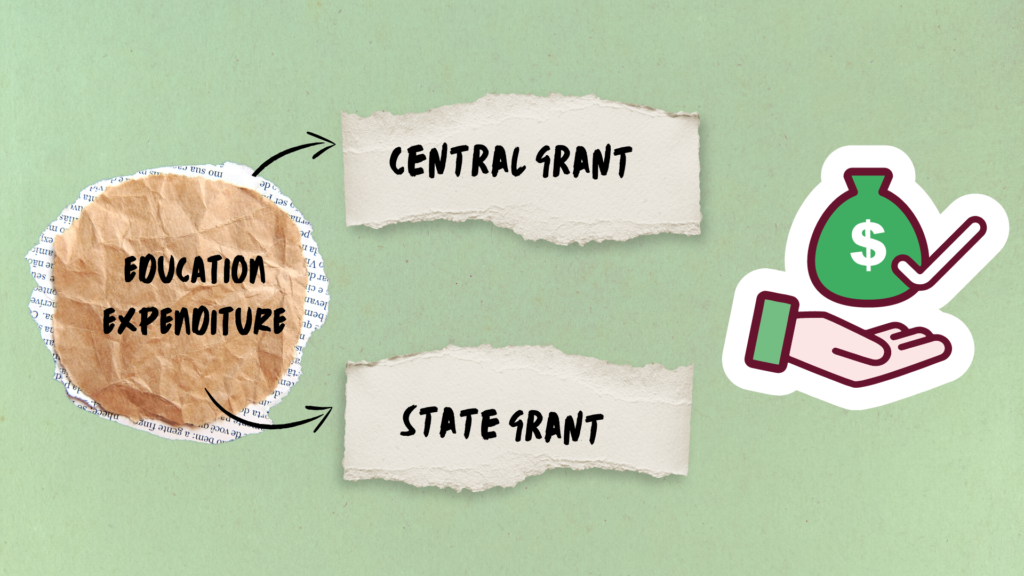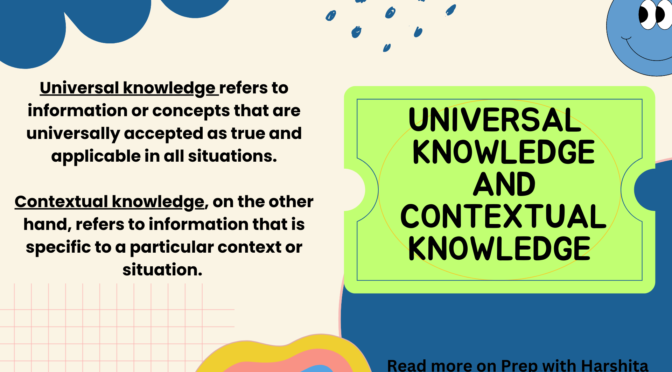Integrated and Inclusive Education are different from each other.
Integrated Education
It is a form of education where students from different backgrounds, abilities, and social classes are taught together in the same classroom. The purpose of integrated education is to promote understanding, respect, and appreciation for diversity among students.
- Integrated education can take different forms, depending on the specific context and goals of the educational system.
- In some cases, it involves integrating students with disabilities or special needs into mainstream classrooms, allowing them to learn alongside their peers without discrimination.
- In other cases, it may involve integrating students from different ethnic, cultural, or socio-economic backgrounds, with the aim of breaking down barriers and promoting social cohesion.
- Integrated education has been shown to have many benefits, including improving academic outcomes for all students, reducing prejudice and discrimination, and promoting social and emotional development.
- However, it can also be challenging to implement and requires careful planning, support, and resources to ensure that all students have access to high-quality education and support.
Inclusive Education
Inclusive education is an approach to education that aims to provide all students, regardless of their individual differences or special needs, with equal opportunities to learn and participate in the school community.
- It involves creating a learning environment that is responsive to the needs of all students, including those with disabilities, learning difficulties, or social or emotional challenges.
- Inclusive education involves a shift away from traditional models of special education, which may involve segregating students with special needs into separate classrooms or schools.
- Instead, inclusive education seeks to integrate students with diverse needs and abilities into regular classrooms, where they can learn alongside their peers and receive appropriate support to meet their individual needs.
- Inclusive education can have many benefits, including improving academic outcomes for all students, promoting social and emotional development, and reducing discrimination and prejudice.
- However, it requires a commitment to collaboration and cooperation among educators, families, and communities, as well as ongoing training and support for teachers to develop the skills and knowledge needed to create a truly inclusive learning environment.
- Ultimately, inclusive education is about recognizing and valuing the diversity of all learners and creating a learning environment that is accessible, welcoming, and responsive to the needs of every student.
Difference between Integrated and Inclusive Education
Inclusive education and integrated education are two approaches to education that aim to promote diversity and inclusion in the classroom. While there are some similarities between these two approaches, there are also some important differences.
Integrated education involves bringing students from different backgrounds and abilities together in the same classroom. It can involve integrating students with disabilities or special needs into regular classrooms, or it can involve integrating students from different ethnic, cultural, or socio-economic backgrounds. The goal of integrated education is to promote understanding, respect, and appreciation for diversity among students.
Inclusive education, on the other hand, is a broader approach that aims to create a learning environment that is responsive to the needs of all students, regardless of their individual differences or special needs. It involves creating a learning environment that is accessible and welcoming to all students, and that provides appropriate support to meet the diverse needs of every learner.
While integrated education can be a part of inclusive education, inclusive education goes beyond integration to create a truly inclusive learning environment that values and supports the diversity of all learners. Inclusive education also recognizes that some students may require additional support or accommodations to fully participate in the learning environment, and seeks to provide these supports in a way that promotes their full inclusion and participation in the school community.
In summary, while integrated education aims to promote diversity and understanding by bringing students from different backgrounds and abilities together in the same classroom, inclusive education is a broader approach that seeks to create a learning environment that is responsive to the needs of all students and promotes their full inclusion and participation in the school community.
